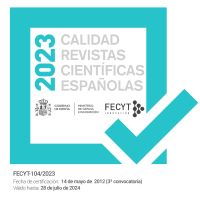Construction and validation of the sexting behaviors scale (SBS)
DOI:
https://doi.org/10.5944/reop.vol.27.num.2.2016.17116Keywords:
sexting, questionnaire, validation, construction, young peopleAbstract
ABSTRACT
The aim of this paper was to construct and validate the Escala de Conductas sobre Sexting (ECS) (by the absence of standardized procedures for evaluating behaviors related to the sending and receiving sexts -text messages or images with provocative or sexual content- through the mobile phone and social networks) (Dir, Cyders y Coskunpinar, 2013), with a sample of 985 Spanish university students. Firstly, a pilot study was made with 110 university students, showing a good internal consistency (α = .923) and allowing to execute the initial adjustments and modifications. To confirm the relationship between the items, the sample, randomly selected, was divided into two. An exploratory factorial analysis, with Varimax rotation in the first subsample, showed a significant relationship between the items and a good internal consistency (α = .922), retaining three factors that explained the 66.406% of the variance. Finally, a confirmatory factorial analysis carried out with the second subsample, revealed a good fit of the model. On the other hand, the Goodness of Fit Index (GFI) and the Adjusted Goodness of Fit Index (AGFI) offered values of .919 and .854, respectively; while the average of the Root Mean Square Error of Approximation (RMSEA) showed a value of .061. All these data lead to the conclusion that the ECS seems to be a valid and reliable scale to evaluate the sexting behaviors in this population.
Downloads
Downloads
How to Cite
Issue
Section
License
Las obras que se publican en la revista REOP están sujetas a los siguientes términos:
1. Los autores conservan los derechos patrimoniales (copyright) de las obras publicadas, y garantizan a la revista el derecho de ser la primera publicación del trabajo al igual que permiten la reutilización de las mismas bajo la licencia de uso indicada en el punto 2.
2. Las obras se publican en la edición electrónica de la revista bajo una licencia Creative Commons Reconocimiento-NoComercial 4.0 Internacional . Se pueden copiar, usar, difundir, transmitir y exponer públicamente, siempre que: I) se cite la autoría y la fuente original de su publicación (revista, editorial y URL de la obra); II) no se usen para fines comerciales; III) se mencione la existencia y especificaciones de esta licencia de uso.
3. Condiciones de auto-archivo. Se permite y se anima a los autores a difundir electrónicamente la publicación de sus obras, ya que favorece su circulación y difusión y con ello un posible aumento en su citación y alcance entre la comunidad académica.






